The Coolidge Corner Theatre plays a starring role in its Brookline neighborhood, four miles west of downtown Boston. Initially a majestic Art Deco movie palace, the Coolidge has since emerged as a vibrant independent art house known for creative programming, such as themed film series and educational lectures, that draws cinephiles from throughout the Northeast. To further expand offerings and accommodate the growing audience’s needs, its leadership aspired to supplement the historic building with two new theaters, an event/community space, media library, and new lobby. They partnered with Boston-based firm Höweler + Yoon to preserve the Coolidge Corner Theatre’s distinctive character and prepare the spirited nonprofit institution for its next century of operation.
Situated along a low-rise commercial main street, the Coolidge commands attention, thanks to its soaring sunburst marquee and intricate Art Deco facade of cream-colored brick in patterned vertical bands. Prior to the addition, the theater’s entrance doors and exterior ticket window lacked such prominence, located around the corner in a side alley that leads to a rear parking lot. Whether blazing heatwave or snowy nor’easter, the Coolidge’s ticket line would stretch down this dim passageway, winding past a three-story steel fire escape scaled by the film-reel-lugging projectionist working the top-story projection booth. This precarious yet necessary climb, and other such idiosyncrasies, arose from the property’s ad hoc reconfigurations; originally constructed in 1906 as a Universalist church, in 1933 the space was transformed into a 1,500-seat movie house, and then later reworked into four smaller theaters with a cramped lobby.
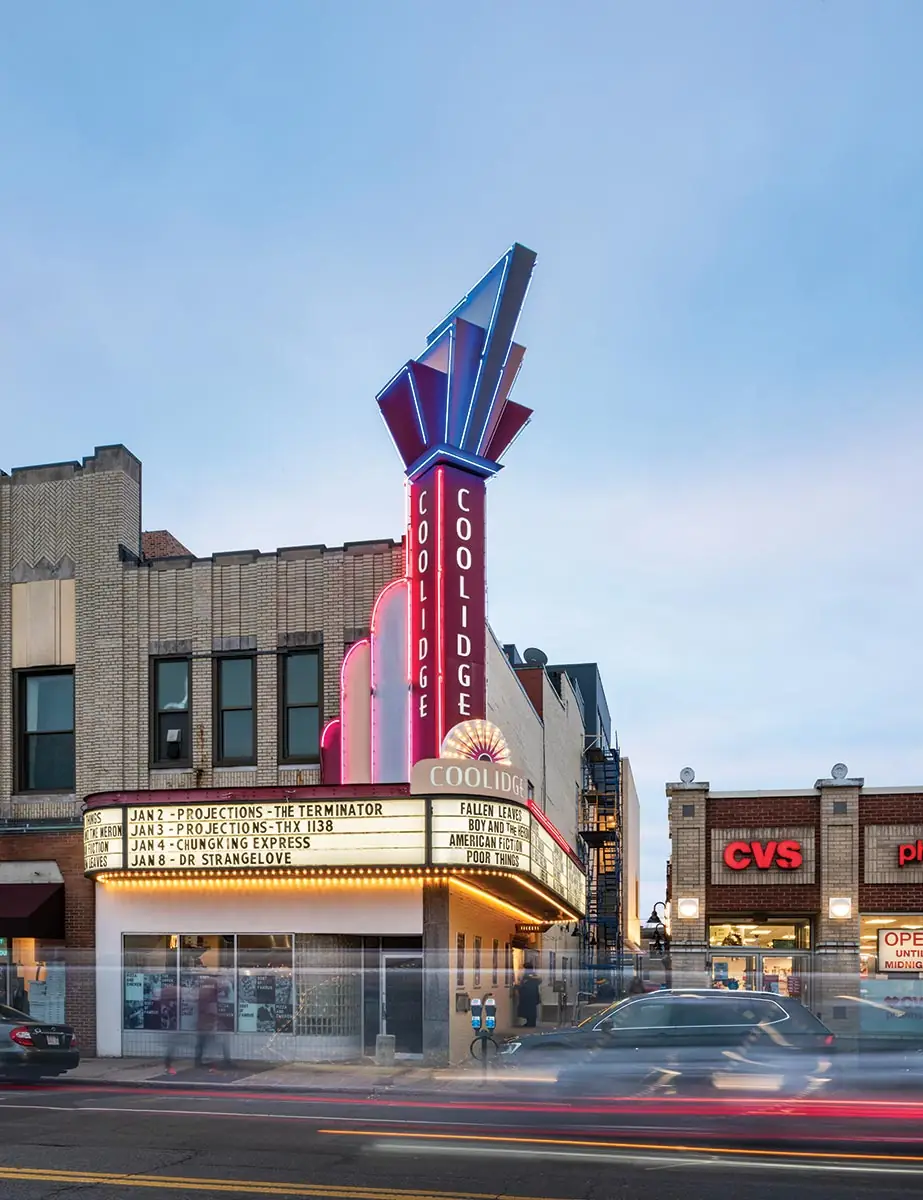
1
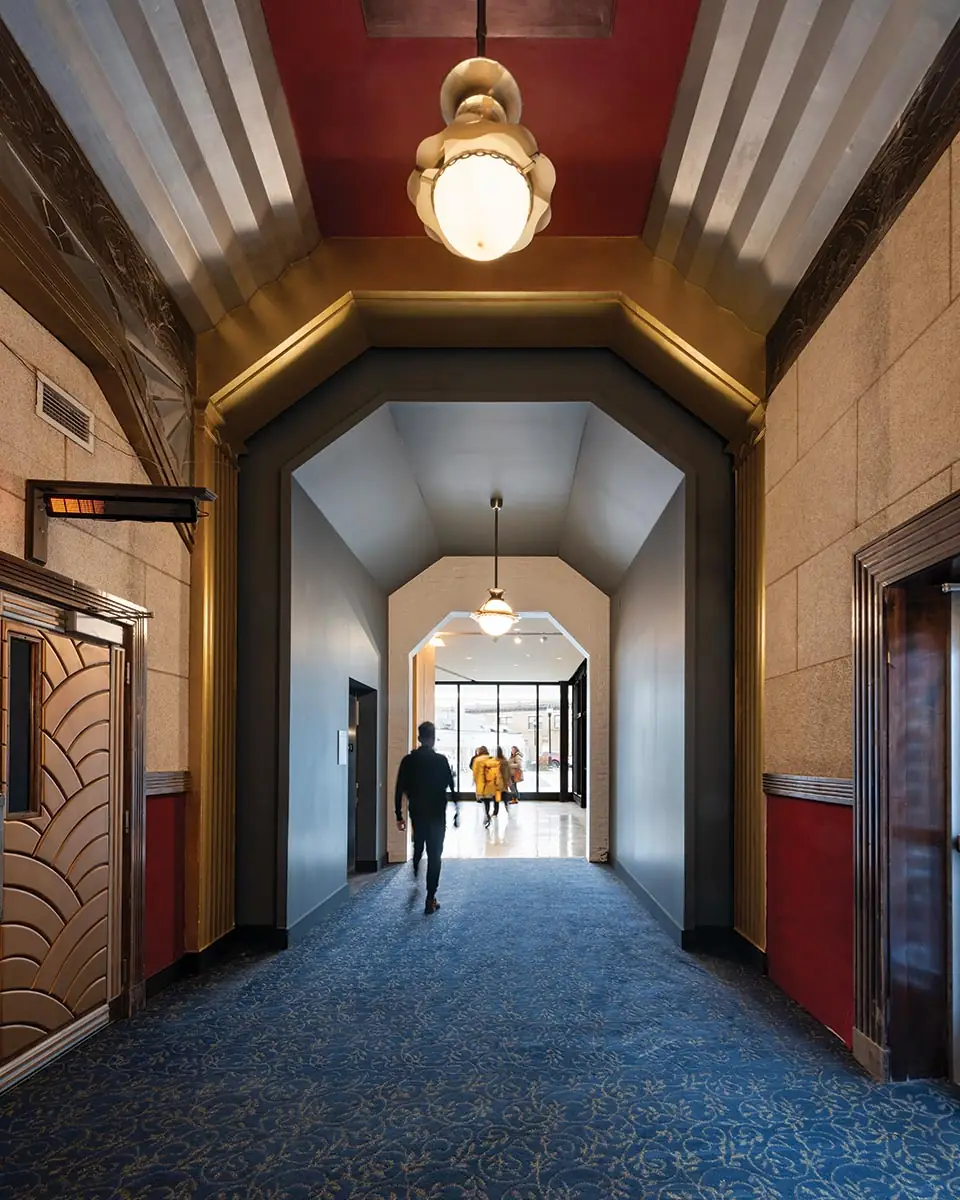
2
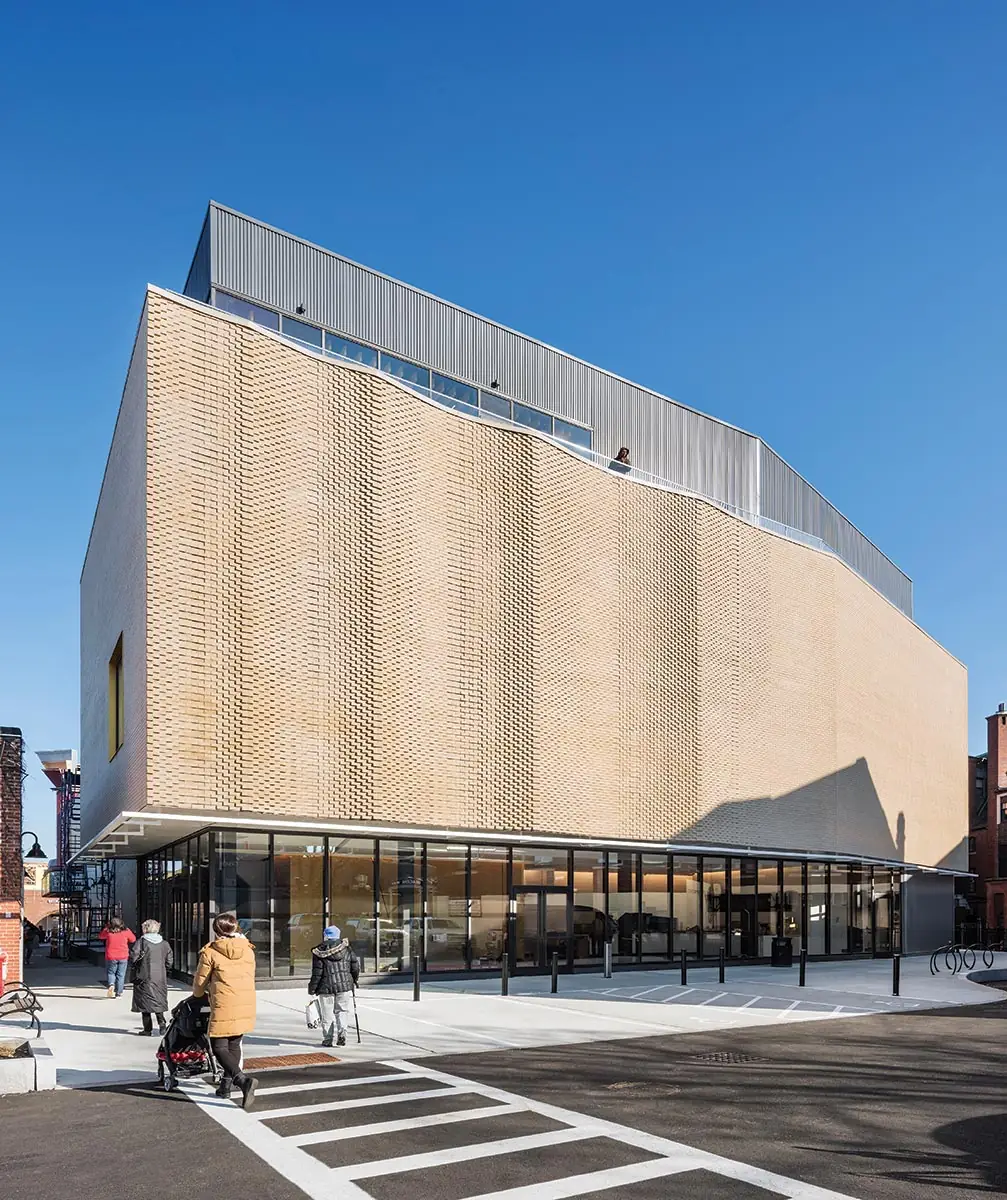
3
The Coolidge’s marquee and Art Deco details (1 & 2) were a point of departure for the pixilated curtainlike brick wall (3) and the gilded stair core in the new lobby (4). Photos © Anton Grassl
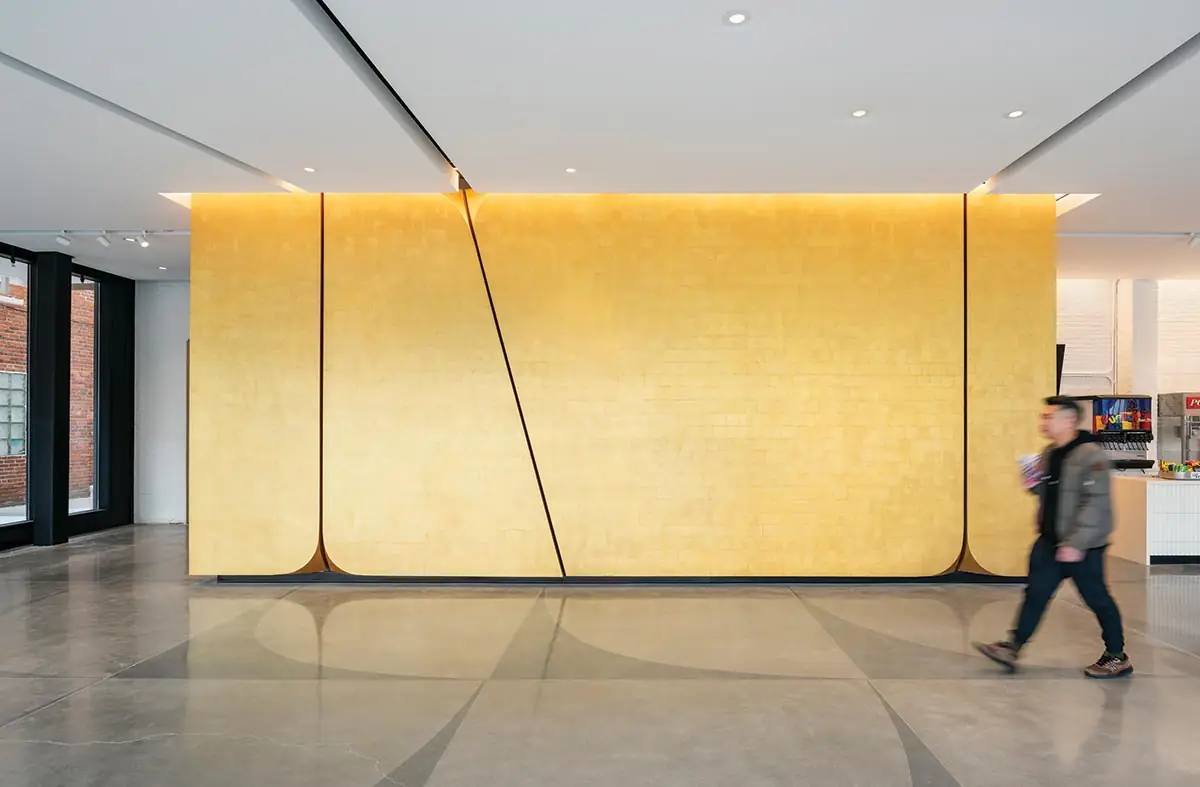
4
The Coolidge’s existing interior—alive with gilding and geometric motifs—embodies Art Deco extravagance. Yet when formulating their design approach, Höweler + Yoon looked beyond ornamentation to focus on a cultural aspect of the older era that resonates with the present. “Art Deco is not a style; it’s an attitude about technology,” says firm principal and cofounder Eric Höweler. “Think about electricity, lighting, film, broadcasting. Art Deco emerged at a moment of enthusiasm for these innovations, and we see an echo of that today with the exuberance around computation, pattern-making, and immersive experience.” With this notion in mind, the architects worked to translate the Art Deco character of the original Coolidge into a contemporary idiom. Alongside the building’s historic status and dense urban condition, design challenges involved making the addition fossil-fuel free, per Brookline’s ambitious energy goals, and accomplishing everything on the nonprofit’s tight budget, raised via grassroots funding. Asked to do a lot with a little, and inspired by celebrated films such as The Wizard of Oz and 2001: A Space Odyssey, Höweler + Yoon turned to cinema’s essential ambience-defining elements: light and color.
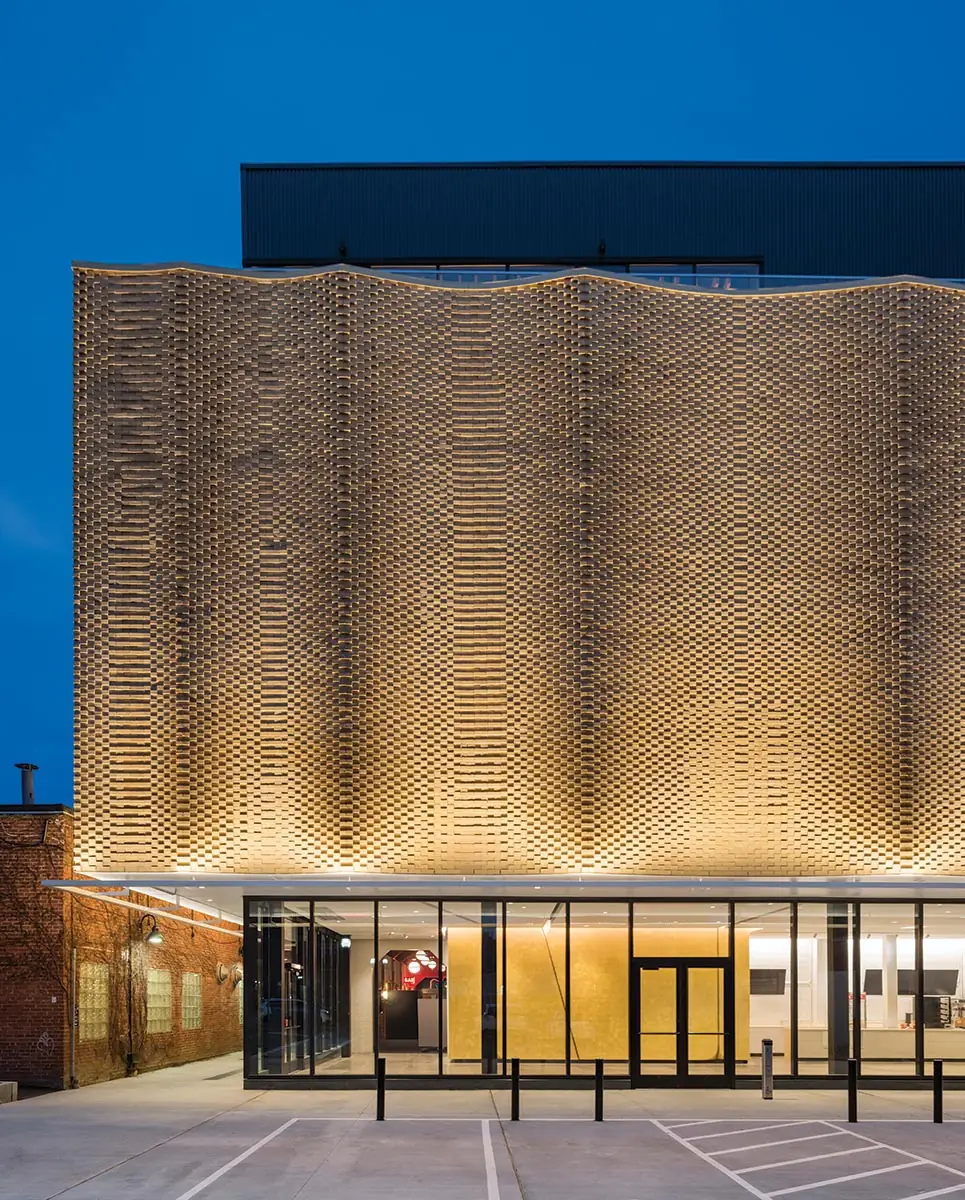
Photo © Anton Grassl
From the main street, the addition remains largely hidden. Down the alleyway, peeking from behind the original building, rises a three-story box rendered in glass and corrugated metal panels, creating nearly 15,000 square feet of space on a narrow swath of land. Wrapping this neutral backdrop is the Coolidge’s new emblem: a cream-colored veneer that reads as a billowing curtain—one that, as the viewer approaches, disarticulates into staggered bricks arranged in concave undulations. Animated by natural and artificial light, the textured surface re-envisions the Art Deco street front in present-day terms of pixilation and image resolution, resisting the characteristic smoothness of computational form. Rather, minor imperfections in the hand-set brick pattern emphasize the “lo-res” facade’s singularity.
Through the Coolidge’s former back/new front, patrons enter an open glass-walled lobby with an indoor ticket booth and space for informal gathering. The original exterior rear brick wall is now an inside surface, painted white—the same hue as the ceiling’s taut fabric panels and the concession counter’s scalloped tiles. In contrast to the ample ornament of the pre-existing interior, which stands mostly untouched save for improvements in accessibility and egress, the new lobby offers a neutral environment that showcases a single brilliant feature: a sculptural gold-leaf-textured wall, inspired by Liz Taylor’s sparkling costume in Cleopatra, which encloses the stair to the floors above.
Upstairs, the hallways and media library continue the lobby’s neutrality, but the new state-of-the-art theaters explode with color. Movie House 5, on the second floor, envelops visitors in scarlet, which emanates from the wall panels, noise-and-vibration proofed ceiling, carpeting, and 149 seats, all indirectly lit for increased effect. The experience of moving from the muted circulation spaces to the theater echoes that of Helen Mirren’s character walking from the colorless lavatory to the crimson dining room in Peter Greenaway’s The Cook, The Thief, His Wife & Her Lover. On the third floor, the smaller, 54-seat Movie House 6 immerses visitors in cobalt blue, evoking the vast expanse of outer space, as in Kubrick’s aforementioned classic. Adjacent to this theater sits a room for community or private gatherings of up to 98 people (60 when in classroom configuration). Plentiful glass and an outdoor deck enable neighborhood views, while an attached catering kitchen supports operations. Visible from the ground below, a luminous yellow ceiling links this event space to the lobby’s golden glow, signaling an intricate choreography that unites the building as a whole.
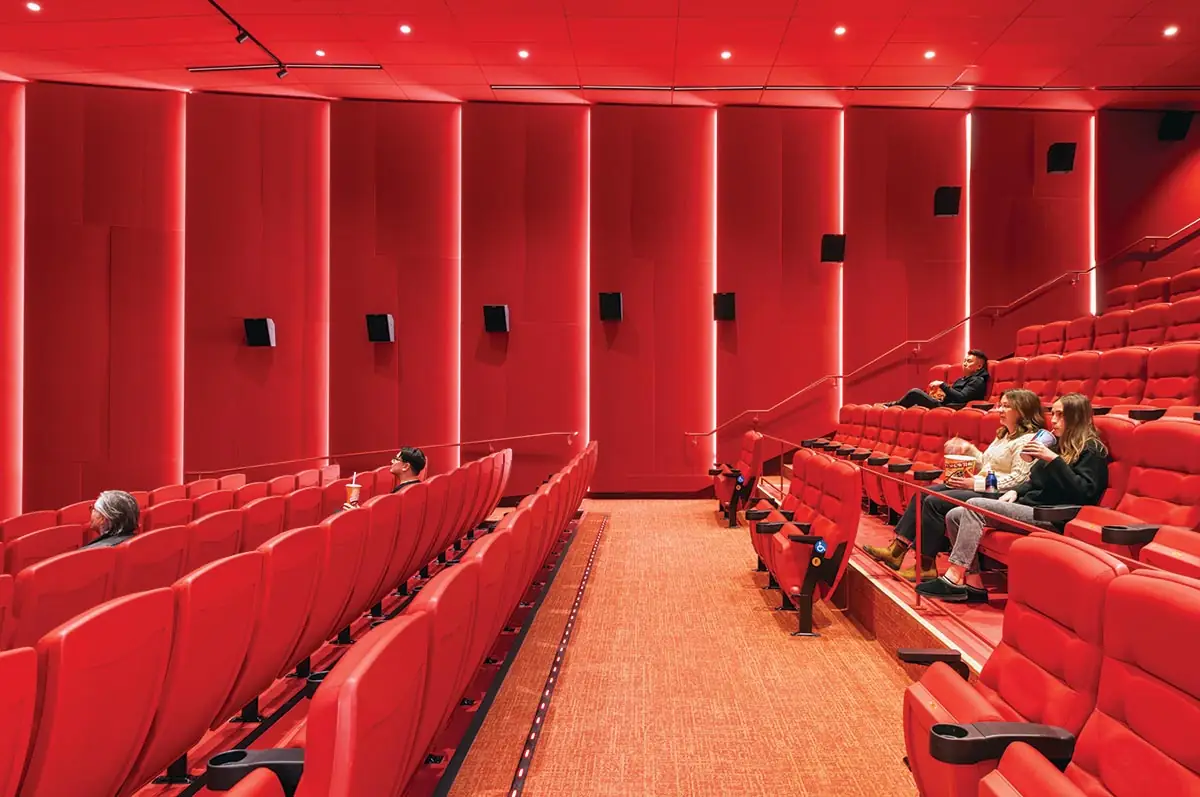
5
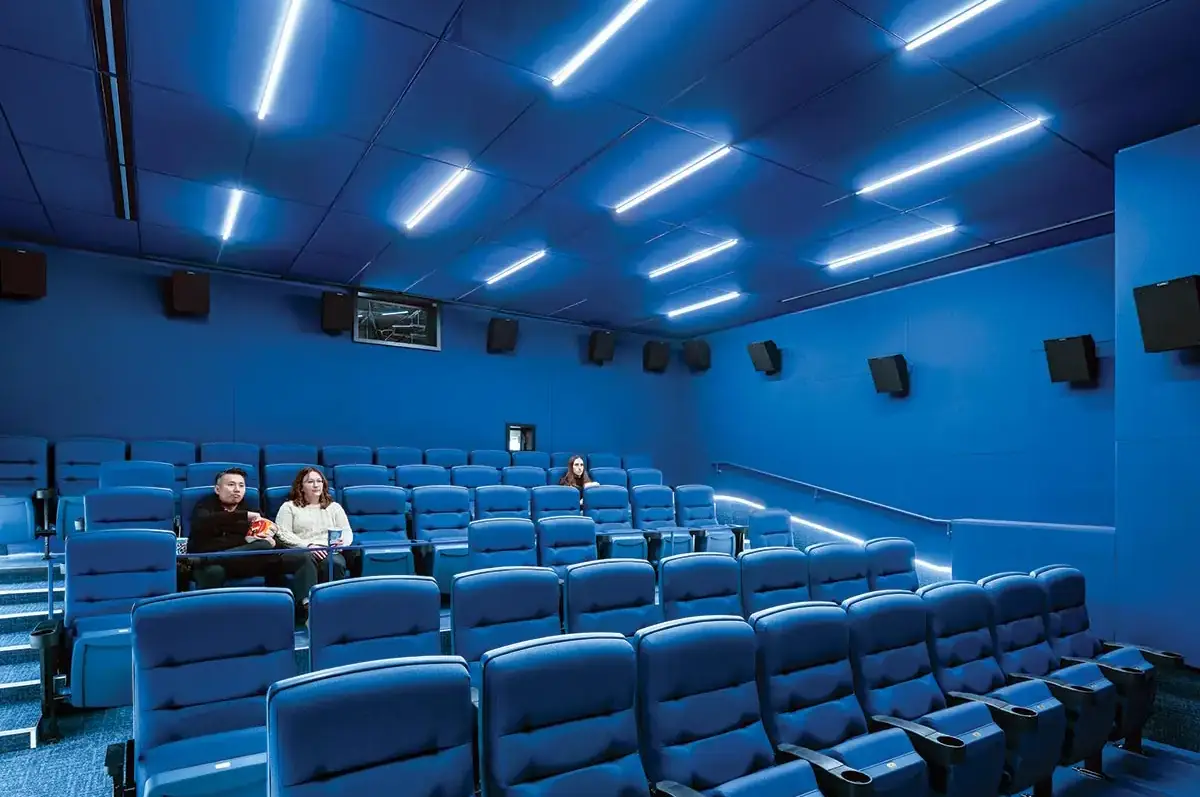
6
Each of the new theaters immerses moviegoers in a single color—scarlet in Movie House 5 (5) and cobalt blue in Movie House 6 (6). Photos © Anton Grassl
Today, as corporate multiplexes falter, the Coolidge shines brighter than ever. For Höweler, this curiosity is explained by the idea that art house theaters double as community centers. The Coolidge has long acted as an independent cinema and neighborhood haunt, and, with the addition, which opened in January 2024, the Coolidge now serves its community in an even greater capacity. “In the age of online streaming and social media, we have a profound need for places to gather physically,” Höweler says. “And the Coolidge Corner Theatre is opening at a moment when we long to be together again.”
Click plans to enlarge

Click details to enlarge
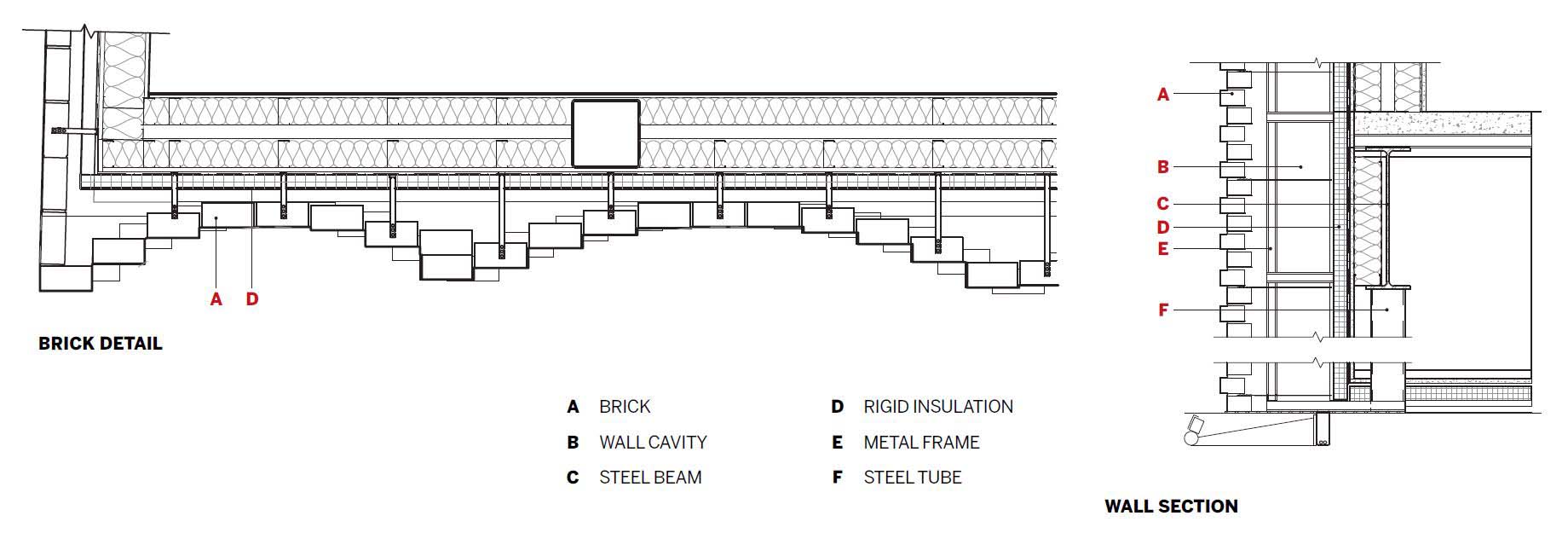
Credits
Architect:
Höweler + Yoon Architecture — Eric Höweler, J. Meejin Yoon, principals; Jonathan Fournier, project manager; Nickle Cheung, Caroline Shannon, project architects; Karl Heckman, Elle Gerdeman, senior designers; Shuang Chen, Matthew Hayes, David Mora, David Hamm, Sungwoo Jang, Namjoo Kim, Caleb Hawkins, Pak Cheun Chan, Daniel Fougere, design team
Engineers:
Wozny Barbar & Associates (m/e/p/fp/security/IT); Souza True & Partners (structural); HW Moore/Hancock (civil)
Consultants:
Acentech (acoustics); Hastings Consulting (code); McPhail (geotechnical); SGH (facade); Arka Specs (hardware); Arup (lighting)
General Contractor:
Groom Construction
Client:
Coolidge Corner Theatre Foundation
Size: 14,000 square feet (addition); 3,000 square feet (renovation)
Cost:
Withheld
Completion Date:
December 2023
Sources
Masonry:
Taylor (wire-cut brick)
Curtain Wall:
Kawneer
Glazing:
Oldcastle BuildingEnvelope
Interior Finishes:
Turf, Armstrong (acoustical ceilings); Sherwin-Williams (paints); Daltile


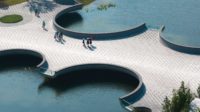
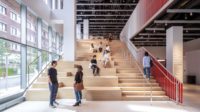
Post a comment to this article
Report Abusive Comment